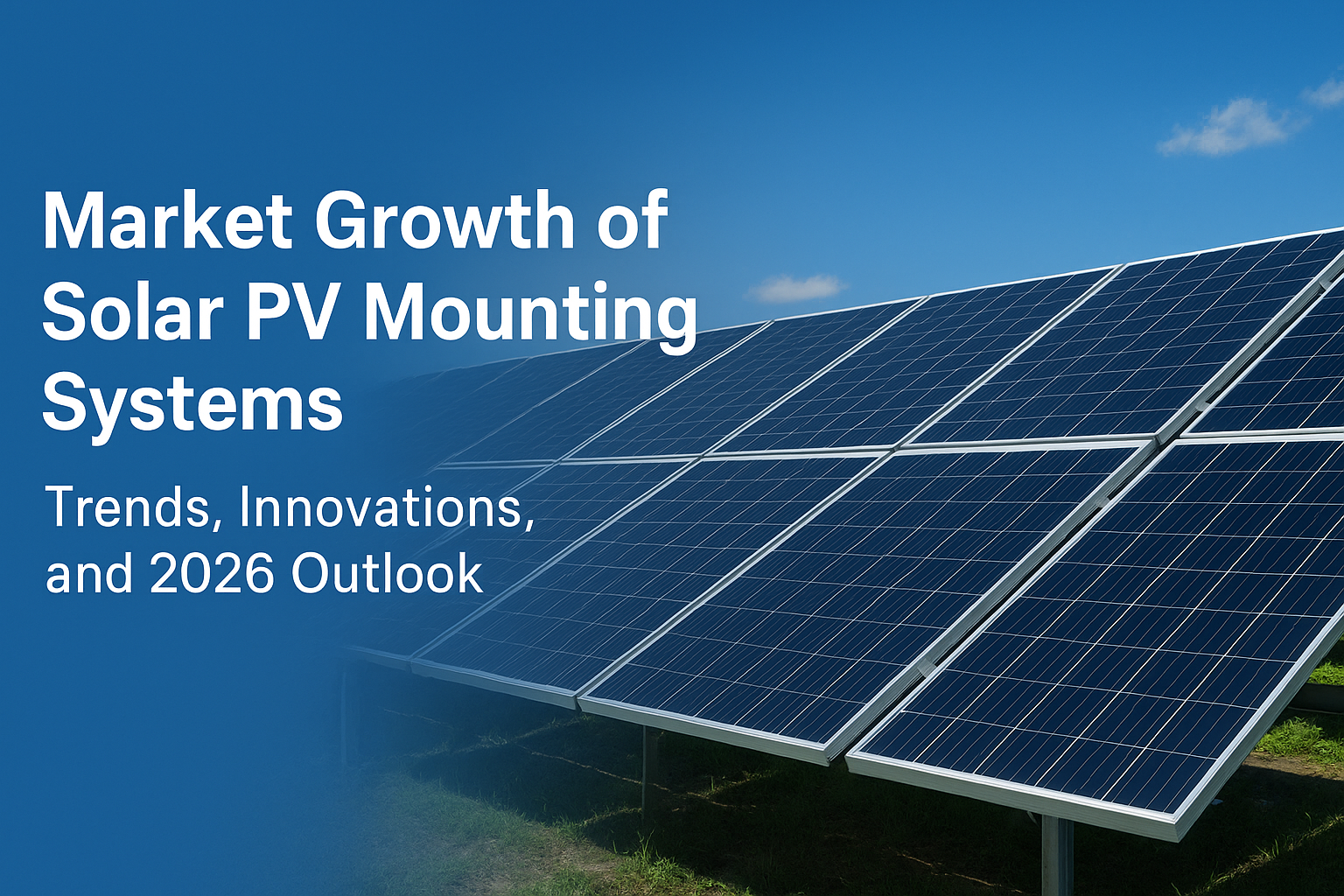As the global transition toward clean energy accelerates, solar PV mounting systems have emerged as a crucial component in solar infrastructure. These systems form the backbone of photovoltaic installations, ensuring stability, durability, and efficiency. With the solar energy market growing rapidly worldwide, the solar PV mounting system industry is witnessing substantial growth, innovation, and investment.
According to recent reports, the global Solar PV Mounting Systems Market is projected to reach USD 16.17 billion by 2026, expanding at a CAGR of around 5% during the forecast period. The rising adoption of renewable energy, cost reductions in solar modules, and government incentives are expected to be the primary drivers of this growth.
What Are Solar PV Mounting Systems?
A solar mounting system is the structural framework that supports solar panels on rooftops, open fields, or floating platforms. These systems are designed to hold panels at the correct tilt and orientation to capture maximum sunlight. They are broadly categorized into:
-
Ground-Mounted Systems – Used in large-scale utility projects.
-
Rooftop Systems – Common in residential and commercial installations.
-
Tracking Systems – Automatically adjust the panel direction to follow the sun, increasing energy yield.
-
Floating Mounting Systems – Installed on water bodies to optimize land use and reduce evaporation.
Market Overview and Growth Trends
In recent years, the demand for solar PV mounting structures has surged due to an exponential increase in solar installations worldwide. The International Renewable Energy Agency (IRENA) projects that global solar PV capacity could reach over 6,000 GW by 2030, driving immense demand for efficient and cost-effective mounting solutions.
Between 2024 and 2026, the market is expected to grow steadily, fueled by:
-
Massive solar deployment targets across Asia-Pacific, Europe, and the U.S.
-
Technological advancements such as pre-assembled, lightweight aluminum structures.
-
Declining costs of components and easier installation processes.
In India, for instance, the government’s push for 500 GW of renewable capacity by 2030 is propelling local manufacturers and EPC companies to innovate in mounting technologies.
Key Market Drivers
1. Growing Solar Installations
With countries racing to meet net-zero goals, solar energy remains the fastest-growing renewable source. Every new installation requires mounting solutions, directly boosting the sector’s expansion.
2. Technological Innovations
Modern systems now feature modular and corrosion-resistant materials, cutting installation time by up to 40%. Smart tracking systems and AI-based tilt adjustment are also enhancing energy output, creating strong demand for next-gen mounting technologies.
3. Supportive Government Policies
Subsidies, tax incentives, and clean energy mandates in regions like India, China, the U.S., and the EU are further accelerating adoption. The shift to local manufacturing of mounting components also strengthens market resilience.
Regional Insights
-
Asia-Pacific leads the global market with a dominant share, thanks to large-scale solar projects in China and India.
-
North America is witnessing robust growth, driven by utility-scale solar farms and the Inflation Reduction Act in the U.S.
-
Europe continues to expand rooftop solar installations, boosting the need for innovative roof-mount systems.
By 2026, Asia-Pacific is projected to hold over 45% of the total market share, followed by North America and Europe.
Market Challenges
While the outlook is strong, the industry faces a few challenges:
-
Fluctuating raw material prices, particularly aluminum and steel.
-
Supply chain disruptions impacting project timelines.
-
Land constraints for large-scale installations in urban regions.
However, the trend toward lightweight, modular, and recyclable materials is expected to offset many of these issues by 2026.
Forecast and Expectations for 2026
Looking ahead to 2026, the solar PV mounting systems market is expected to:
-
Reach USD 16.17 billion globally (Research Nester, 2024).
-
Witness 4.5–6.5% CAGR across the forecast period (Mordor Intelligence, 2024).
-
See major growth in floating and tracking systems, which will capture more than 25% of new installations by 2026.
-
Experience an expansion in localized manufacturing in Asia, especially India and China, reducing dependency on imports.
-
Shift toward sustainable materials with reduced carbon footprints.
By 2026, the sector will also benefit from emerging technologies like AI-driven solar tracking, IoT-integrated monitoring, and robotic installation systems, all of which aim to make solar mounting smarter and more cost-efficient.
Future Outlook
The growing emphasis on sustainability, cost optimization, and smart design is shaping the future of solar mounting structures. Manufacturers are focusing on developing products that are lightweight, easy to install, and recyclable, aligning with global ESG standards.
Moreover, the increasing integration of bifacial solar panels, which generate energy from both sides, is creating new design opportunities for mounting system manufacturers.
Conclusion
The solar PV mounting systems market is set for impressive growth through 2026 and beyond. As solar adoption accelerates globally, the demand for efficient, durable, and intelligent mounting systems will only rise. Companies investing in innovation, automation, and sustainability today will lead the market tomorrow.
Whether for large-scale farms or urban rooftops, mounting systems are no longer just structural supports—they are key enablers of solar energy’s future.
